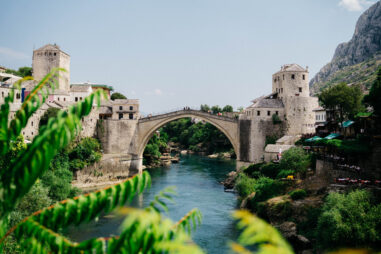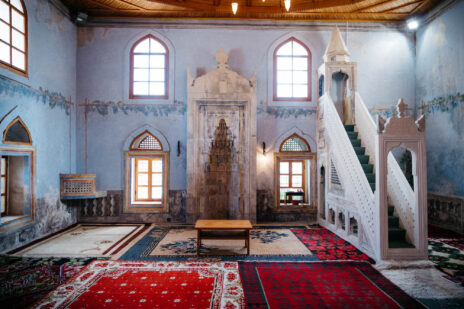
On my journey eastward from London to Beijing along the old Silk Road, I first heard the call the prayer in Mostar, in Bosnia & Herzegovina.
It felt like a poignant moment and a significant transition point between cultures and religious traditions. The town is home to several Ottoman-era mosques and many churches too; a huge new one is currently under construction. Mosque and church live side by side although the bullet holes and shrapnel marks that scar numerous buildings offer silent testament to more troubled times.
In the Hadži Kurt Mosque, I met Ilma, a young red-headed women with bright blue eyes who worked as its caretaker. The mosque, she told me, was built at the end of the 18th century by and for the leather tanners that worked nearby. Ostracised for being too dirty by the rest of the community, they built their own mosque to pray in. Sadly, there are no tanners left today. Nearby, only their repurposed workshops remain. It’s a beautiful little mosque, full of colourful carpets and frescoes. Ilma proudly showed off some Qurans in both Arabic and the Bosnian language.
Ilma is a Muslim, her boyfriend and many of her friends, she was keen to tell me, are Orthodox Christian. She was working at the mosque to earn some money while studying healthcare management at the local university.
It was hot and she was eager to finish for the day so she could go swimming in the nearby Nevreta river but not before sending me to see another mosque where her father, she told me, would be only too keen to show me around.









